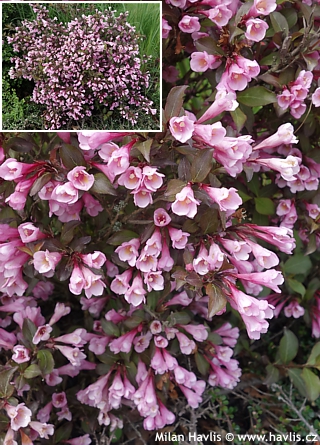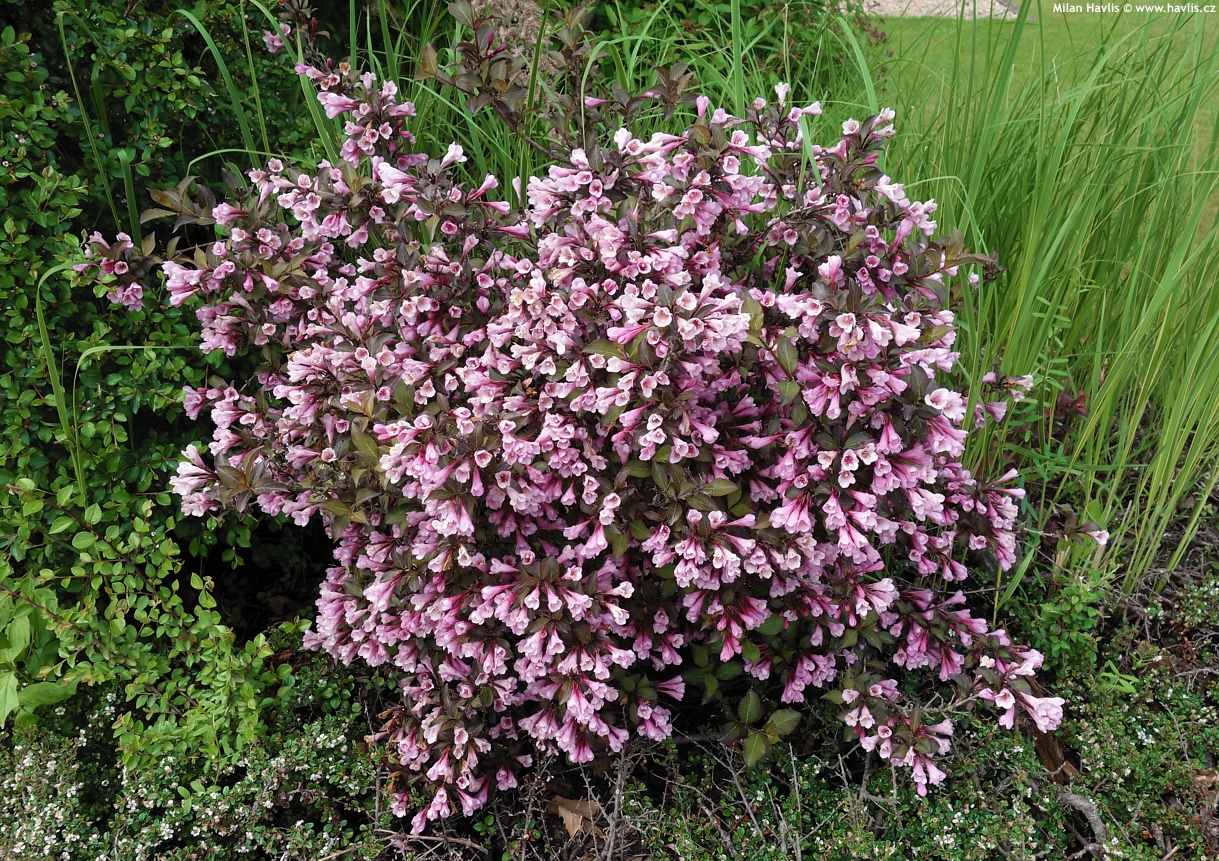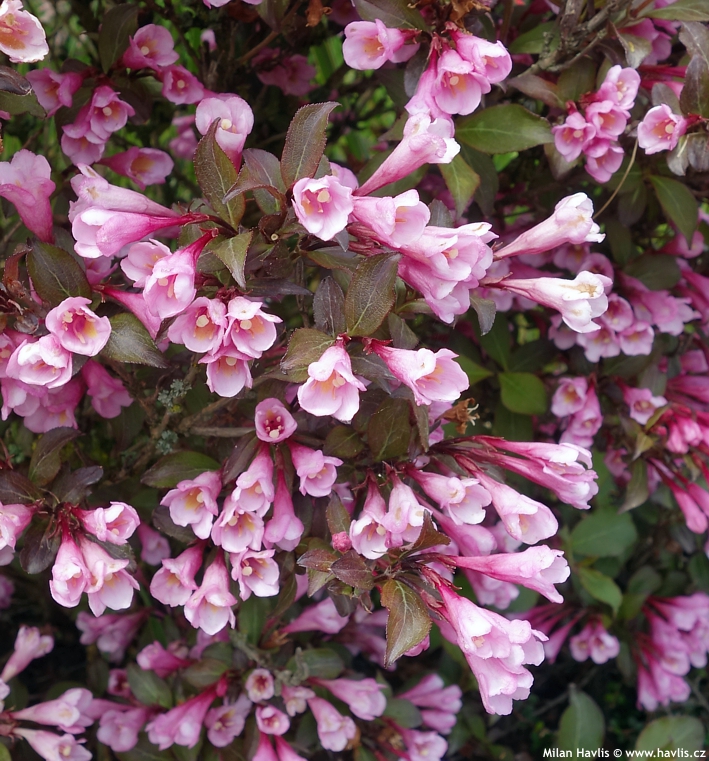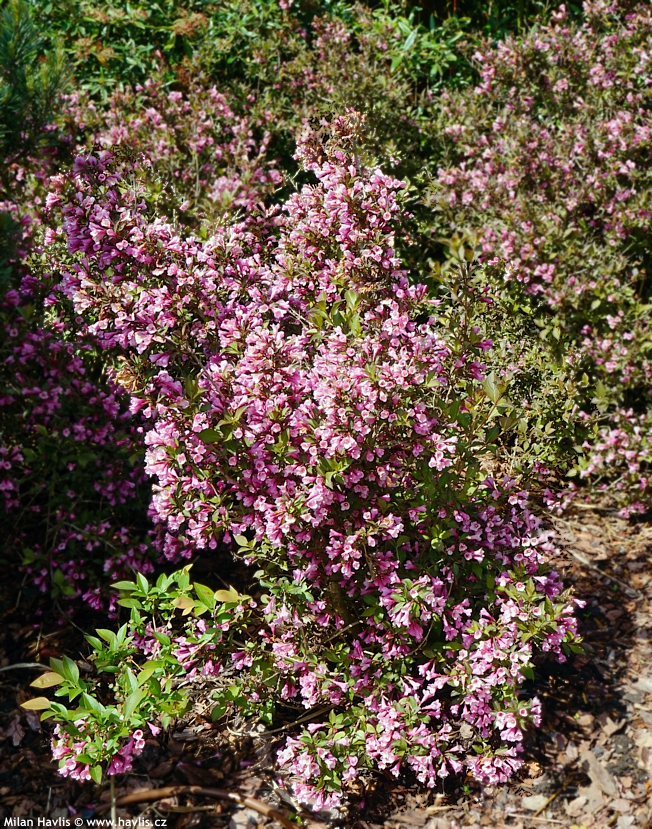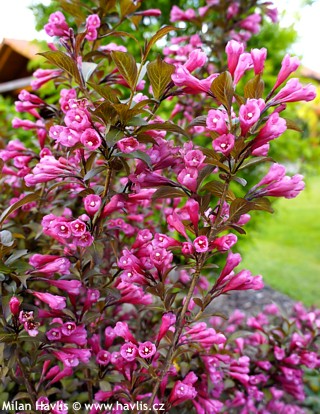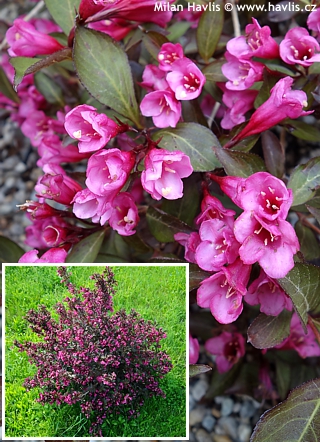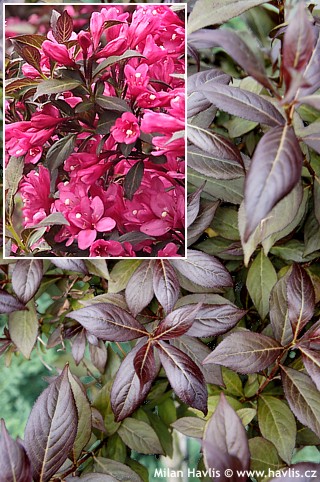Weigela florida 'FOLIIS PURPUREIS' weigela


Weigela
Weigelas are highly praised and frequently used landscape plants because they are problem-free, profusely flowering shrubs which require little or no maintenance. They are deciduous and commonly grow 1.5-2.5m tall and wide, while new and modern varieties are bred for more compact growth and there are even dwarf cultivars available today. Weigelas come from East Asia (North China, Korea, Japan) and were named after German professor Christian Ehrenfried Weigel (1748-1831) from University of Geifswalg.
Foliis Purpureis is a proven weigela variety from France, which rose from a selection of plants grown from seeds received from China before 1857. It was chosen for its exceptional colours and a nice habit. Its deciduous leaves are dark olive green with deep maroon to almost chocolate brown hues, they are narrowly ovate to broadly elliptic with a conspicuous tip, and finely serrated at margins. The flowers are narrowly funnel-shaped and act as if they never want to open wide. The plant blooms profusely from the first decade of May for 3-4 weeks. It grows moderately fast and if you prune young plants creating a strong framework, it will maintain an upright and handsome habit in the future.
Pruning is essential if you want a pretty plant which weigelas can easily be. Since they flower mostly on previous year's wood prune them by one third or even one half right after flowering in June so that they have enough of time to make plenty of new twigs that will mature quickly and bear plenty of flowers in the next season. Use them as screening plants in informal flowering hedges, in parks and public landscapes, or as specimens in small sized gardens.
Weigelas thrive in semi-fertile, slightly moist soil, preferably in full sun, however you can often see them growing in part shade or even complete shade and they still bloom. They can take heavy and compacted soil, too, but will need more time to become nice and bushy. Occasional flooding is not a problem, in fact, they prefer excess water rather than drought. Their hardiness varies with variety, but usually they withstand min. -29 °C (USDA zone 5).
Last update: 28-02-2022
Goods are shipped all over Europe. For Russia and U.K. and for further details please read about SHIPPING OPTIONS HERE.
Are you interested in a serious discount for orders NOV-FEB? Check your options here.
THE PRICES INCLUDE VAT of 15%. For quick conversion you can use 1 CZK = approx. 0.04 EUR
- STANDARD QUALITY - Plants of this group are 1st class quality with number of branches and overall density adequate to their size and age, considering they were container grown.
- DE LUXE QUALITY - This label guarantees a luxurious quality of manually selected plants that, compared to their height and age, are exceptionally dense and beautiful.
- EXTRA - These plants are usually mature and bigger specimens with exceptional overall appearance.
- STANDARD (as described in the plant form) means a tree with a trunk of 190-210 cm and a crown at the top, unless specified differently. The commercial size for trees is their girth measured in the height of 1m from ground.
- HOBBY - These plants are of the same quality as our standard-quality plants but younger and therefore cheaper.
- SHRUB - a woody plant with branches growing bushy from the ground level.
- HALF-STANDARD or MINI-STANDARD - a small tree with shorter trunk, its size is usually specified.
- FEATHERED - These are trees with branches growing already from the base of the trunk and up along the stem.
- GRASSES and PERENNIALS - Sizes given usually read the diameter of the pot or the clump, as specified.

































